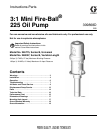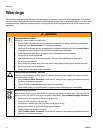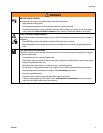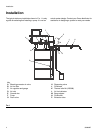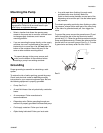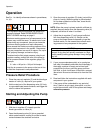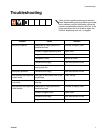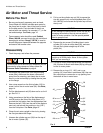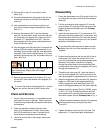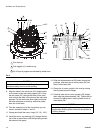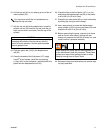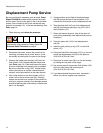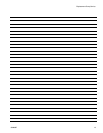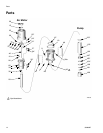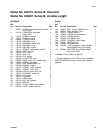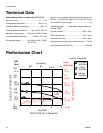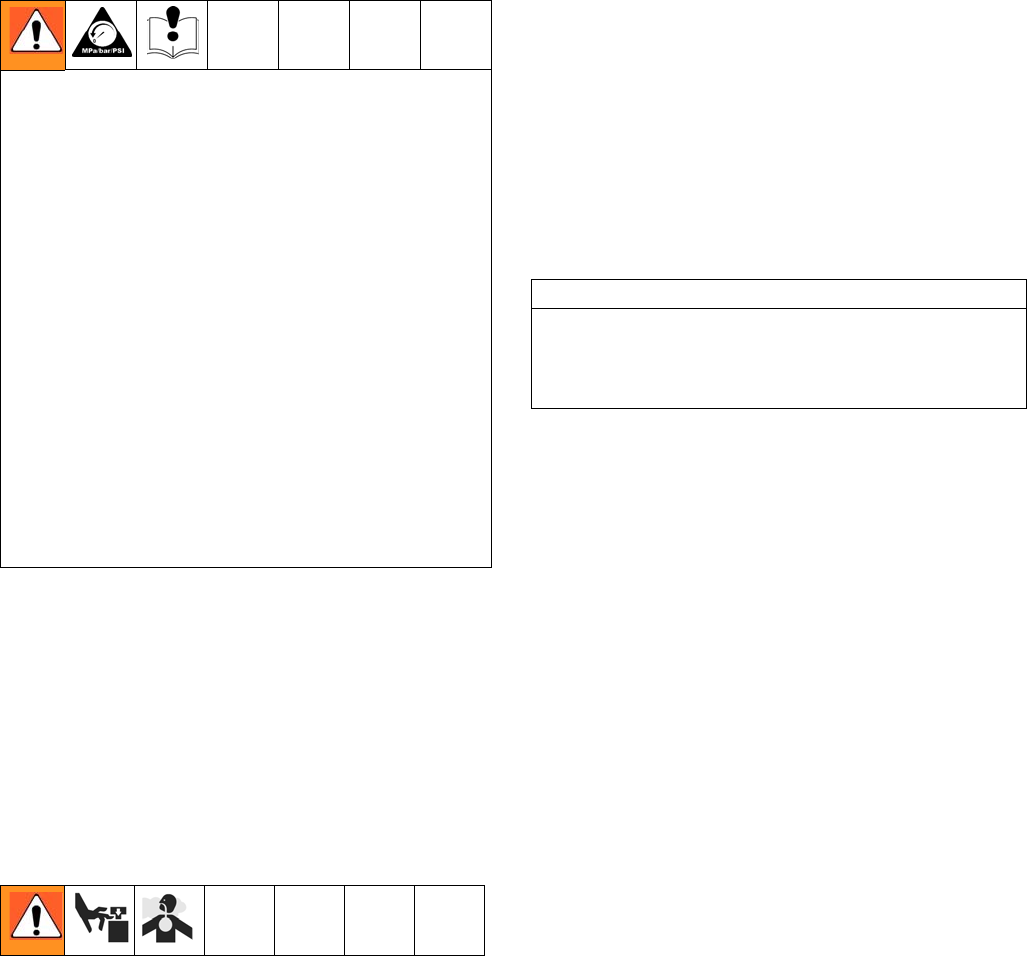
Operation
6 309868D
Operation
See FIG. 1 to identify references shown in parentheses,
i.e., (A).
Pressure Relief Procedure
1. Close the pump air regulator (C) and the bleed-type
master air valve (A), required in your system.
2. Hold a metal part of the dispensing valve (H) firmly
to a grounded metal waste container, and trigger the
valve to relieve fluid pressure.
Starting and Adjusting the Pump
1. With the air regulator (C) closed, open the
bleed-type master air valve (A).
2. Open the dispensing valve (H) into a grounded
metal waste container, making firm metal-to-metal
contact between the container and valve.
3. Open the pump air regulator (C) slowly, just until the
pump is running. When the pump is primed and all
air has been pushed out of the lines, close the dis-
pensing valve (H).
NOTE: When the pump is primed, and with sufficient air
supplied, the pump starts when the dispensing valve (H)
is opened, and shuts off when it is closed.
4. Adjust the air regulator (C) until you get sufficient
flow from dispensing valve (H). Always run the
pump at the lowest pressure necessary to get the
desired results. Do not exceed the maximum work-
ing pressure of any component in the system.
5. If your pump accelerates quickly or is running too
fast, stop it immediately and check the fluid supply. If
the supply container is empty and air has been
pumped into the lines, prime the pump and lines
with fluid, or flush it and leave it filled with a compat-
ible solvent. Be sure to eliminate all air from the fluid
lines.
6. Read and follow the instructions supplied with each
component in your system.
7. If the pump will be unattended for any period of
time, if there is an air supply interruption, or at the
end of the work shift, shut off the system and always
relieve the pressure.
This equipment stays pressurized until pressure is
manually relieved. Read PRESSURIZED EQUIP-
MENT HAZARD warnings on page 2.
Maximum working pressure of all components in the
system may not be the same. To reduce risk of over-
pressurizing any component, be sure you know the
maximum working pressure of each component.
Never exceed the maximum working pressure of the
lowest rated component in the system. Overpressur-
izing any component can result in rupture, fire, explo-
sion, property damage, and serious injury.
To determine the fluid output pressure using the air
regulator reading, multiply the ratio of the pump by
the air pressure shown on the regulator gauge. For
example:
3:1 ratio x 100 psi air = 300 psi fluid output
Limit the air pressure to the pump so that no air line
or fluid line component is overpressurized.
CAUTION
Never allow the pump to run dry of the fluid being
pumped. A dry pump will quickly accelerate to a high
speed, possibly causing pump damage. It may also get
very hot.



